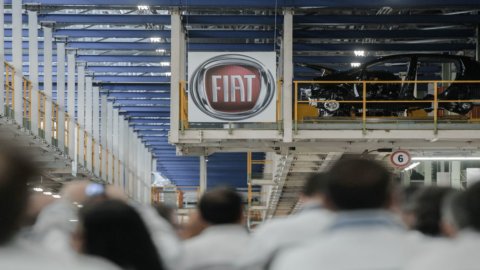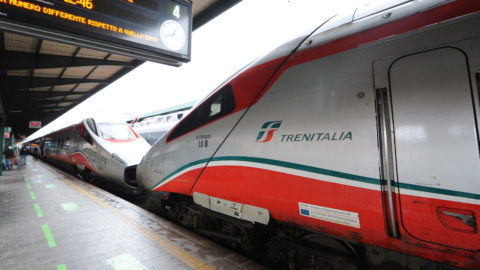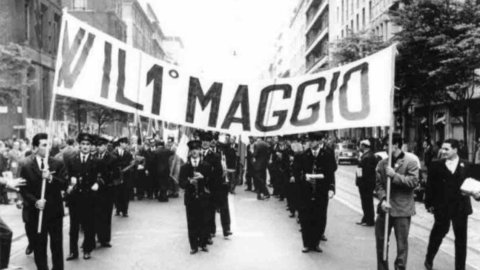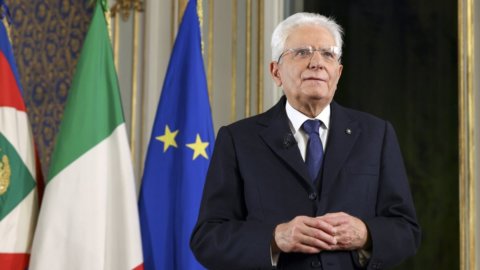After 5 months of union negotiations, accompanied by over 2 million hours of strike, Thursday 5 August 1971, Fiat signed an agreement with the national unions FIM-FIOM-UILM (the future powerful FLM) which would regulate labor and union relations in the factory for the next 40 years. In fact, a hypothesis of agreement had already been reached at the beginning of July, but the company had made the signing of the agreement conditional on the capitulation of the diehards of the Rivalta Torinese plant, headed by a young trade unionist from the FIM-Cisl, Tom Dealessandri, when the strikes in the other factories, including Mirafiori and Lingotto, had already ceased for a few weeks. Rivalta "la Rossa" was at that time the most recent car plant of Fiat.
Became operational in 1968, within two years had reached 18.000 workers, mostly young immigrants from the south who worked on the assembly lines and poured into the factory all their social unease in the transition from a peasant culture to an industrial culture not yet assimilated, exacerbated by the hateful discrimination circulating in the city (just remember the signs “ we do not rent to southerners“). Rivalta continued to strike and it was necessary to wait for the closure of the factories for collective holidays to be able to proceed, with the factories stopped, with the signing of the agreement, known as the "5.8.71" by the company and union managers who worked in the factory in the following decades .
Over the years, trade unionists such as Cesare Damiano, Raffaele Morese, Susanna Camusso, Luigi Angeletti, Pier Paolo Baretta, to name just a few, and top managers of industrial relations such as Cesare Annibaldi and Carlo Callieri have attended the Fiat company bargaining tables, but in in no case, regardless of the swing of the pendulum of the balance of power between the company and the union, were the union rights on the part of the company questioned, or the methods of carrying out the work performance by the union, as defined by "5.8.71" . The hot autumn of 1969 for the renewal of the CCNL for metalworkers, with more than 15 million hours of strike at Fiat, had introduced in the factories, in addition to various conflictual modalities like the strikes at “wild cats” (from the English practice to indicate sudden strikes by groups of workers but capable of blocking the entire upstream and downstream production flow), internal processions or the so-called "body jump" (i.e. omitting some operations in the car assembly phase) also new spontaneous forms of worker representation such as the trade union delegate and the basic unitary committees, completely delegitimizing the representation of the Internal Commissions.
After the entry into force of the law of 20.5.1970, the Statute of Workers, Fiat matured the conviction that, in order to prevent or contain social conflict in its factories, it was necessary to draw the boundaries and pre-establish the themes for trade union confrontation in the factory . To do this, it was necessary to legitimize the role of the union by recognizing it as the main, if not the only, interlocutor within the company. With "5.8.71" it was therefore established with which structures (Committees) and methods (number of hours) the unions acquired the practicability in the factory. The number of company union representatives, envisaged by the Workers' Statute, was doubled with the new figure of the "union expert", so that in each team, composed on average of 150 workers, there was a "union delegate" (rsa or expert ) for the daily management of work issues with the workshop hierarchy.
An annual number of hours of paid union leave was established, far higher than that established by law and contract, in order to be able to carry out union activity in the Committees and in the processing departments or in the offices. Three committees were set up at plant level for information and negotiation on the essential issues heralding conflict in a factory organized on the Tayloristic model: piecework, qualifications and the environment. The Committees were made up of representatives of company management and trade union representatives or trade union experts, on an equal footing between FIM, FIOM and UILM. The Cottimi Committee had the task of check the so-called “workloads”, i.e. the number of operations that had to be carried out in a unit of time, generally no more than 3 or 4 minutes, always the same and for the entire work shift.
The contestation of workloads has been the main cause of micro-conflicts in the establishment over the years. The Qualifications Committee had the task of managing the category transfers envisaged by the CCLN and company agreements, while the Environment Committee had to verify the implementation of company investments for environmental remediation. In the design of the company, this system (confirmed by the subsequent participation commissions set up with the company agreement of 1996 to replace the committees themselves) was intended to be a clear regulation of relations with the union, while for the union it represented its legitimacy and construction of its structures within the company itself.
But the “5.8.71” agreement was also the archetype of a Tayloristic work organisation, as it rigorously defined the times of the operations that the worker had to carry out according to a work metric established by the international system TMC (Times and Related Methods). The work phases, calculated in hundredths of a minute, were merged and regulated by the cadence of the assembly line, i.e. by the time in which the worker had to perform the same operations while the assembly line moved from one station to the next. The agreement introduced limits to the possibility of 100% saturation of the worker's activity in the span of the unit of time: the shorter the cadence, the lower was the saturation of the worker's activity (i.e. the quantity of operations that were assigned to him).
A line cadence of one minute corresponded to a maximum saturation of 84%, 2 minutes of 86%, 3 minutes of 87%. The reward system was linked to the work performance, which moved from individual piecework to a collective performance incentive. In other words, the workers of all the plants, both in the north and in the south of the country, were guaranteed equal pay for equal quantitative services, overcoming the differences that had consolidated over time between the various production realities. Although the agreement replaced the recording of work times carried out by timekeeping analysts, and therefore subject to the discretion of human error, with a scientific system based on standard times, it nevertheless maintained a Tayloristic work organization in which the separation was clear between simple and repetitive activities and other complex activities, which are the responsibility of the hierarchical line.
With the arrival of Sergio Marchionne a real revolution is also taking place in the factory: the traditional hierarchical structures and organizational complexities, by definition unproductive and harmful, are dismantled, replacing them with an organization that distributes decision-making power horizontally to all collaborators (workers, technicians, cadres) who are best suited to exercise them at various levels. If with the "5.8.71" agreement the production system is still declined by the technical system, reducing the contribution of blue-collar labor, albeit more regulated, to a mere indistinct factor of production, it will only be with the Pomigliano agreement of 2010 , undersigned on the corporate side by Paolo Rebaudengo and by the writer and on the trade union side by Bruno Vitali, Giovanni Sgambati and Roberto Di Maulo, that the Tayloristic work organization will be replaced by World Class Manufacturing (WCM), the new factory organization which will see for each workplace the ergonomic synchrony between man and technological processes through the new Ergo-UAS system, which combines work metrics with ergonomics.
Thanks to Sergio Marchionne's vision of the factory, today when you look at a worker's workplace, you see respect for the environment, the safety of people and things, a well-organized working method, the use of advanced technology that reduce worker fatigue, and above all the involvement of operating personnel. And it will still be interesting to check the factory model of Carlos Tavares, the CEO of Stellantis, the recent company born from the merger of FCA with Peugeot, awaited its first efficiency observations on the Italian plants: perhaps a model more for an accountant than a visionary innovator.





